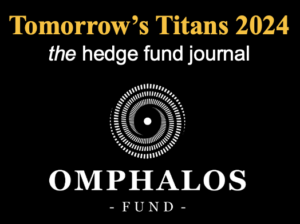
#54 - Behind The Cloud: From Agents to Allies - The Rise of Collaborative Intelligence in Quant Investing (3/4)
The Existing Trading Agents at Omphalos Fund: Signals Without Emotions
September 2025
From Agents to Allies – A Series by the Omphalos Research Team
In this four-part series, the Omphalos Research Team explores the growing role of agentic AI in systematic investing. From today’s signal-generating trading agents to tomorrow’s intelligent, aware, and collaborative agents, we examine how multi-agent systems can reshape decision-making in finance.
The new series of Behind The Cloud offers a behind-the-scenes look at how Omphalos Fund uses AI not as a black box, but as a modular, scalable framework for robust and adaptive trading – and what comes next as portfolios learn to think and act as one.
The Existing Trading Agents at Omphalos Fund: Signals Without Emotions
In last week’s post, we introduced the core idea behind agentic AI: modular, interacting agents that work together to solve complex problems. We also explored why this approach is especially relevant to financial systems, where modularity, transparency, and speed are essential.
This week, we shift focus from the general to the specific — from theory to practice.
At Omphalos Fund, we’ve been using a multi-agent architecture for years. It’s not experimental. It’s not theoretical. It’s the foundation of our trading infrastructure. And while the agents in our current system are not yet collaborative in the way we described in Week 1, they already embody some of the most powerful principles of agentic design: specialization, scalability, autonomy within boundaries, and modular control.
This post is a behind-the-scenes look at how we structure our signal-generating agents, how we separate AI decision logic from core investment rules, and why this separation is not just a technical choice — but a philosophical commitment to trust, transparency, and long-term performance.
How the System Works: Modular, Scalable, Deterministic
The Omphalos architecture consists of hundreds of autonomous trading agents, each designed to:
- Focus on a specific instrument, asset class, and strategy logic,
- Generate market predictions and decide on trade executions,
- Operate independently of other agents,
- Function under the same global set of constraints — namely, one of the 20 hardcoded investment strategy and risk management rules.
Each agent can be thought of as an AI-driven portfolio manager, like a specialized Quant CTA. Some are trained on short-term patterns, others on longer cycles. Some use market data alone, others integrate macroeconomic indicators, volatility measures, or even sentiment proxies.
Each agent generates signals for a specific asset – and they decide to invest or not.
Above this layer, a higher-level system does not make trade decisions. Instead, it periodically assigns weights, determining how much capital each agent can deploy. This ensures that portfolio exposure remains balanced, diversified, and aligned with the fund’s overall risk-return objectives.
The result is a fully systematic process: autonomous agents acting under strict capital and risk constraints, with no discretionary human overrides.
Why Autonomous Agents Matter
You might ask: if there is a higher layer setting weights, do agents still qualify as autonomous?
Yes — because the agents themselves are fully responsible for executing their strategies. Each one:
- Predicts, decides, and executes within its allocated capital,
- Operates independently, without relying on coordination with other agents,
- Is evaluated on its own historical performance and robustness,
- Can be added, removed, or adjusted without changing the rest of the system.
The higher layer’s role is supervisory, not directive. By managing weights rather than trades, it provides diversification and stability, while preserving the autonomy and decision-making integrity of each agent.
In essence, the system is not one central model dictating all trades — but a network of intelligent specialists, each running its own logic under a consistent governance framework. This makes the portfolio more robust, less exposed to model drift, and more adaptable to regime changes.
The Hard Line: Strategy and Risk Logic Are Fixed
While each agent is autonomous in predicting and executing trades, its freedom is not unlimited. Both at the agent level and at the higher weighting layer, strict rules ensure discipline and compliance:
- Agents can only trade within their allocated capital, and each trade must respect hardcoded risk parameters such as stop-loss levels, volatility-adjusted sizing, and liquidity filters.
- The weighting layer periodically assigns capital to agents based on performance and diversification metrics, but it cannot override core investment or risk constraints.
These rules are:
- Fully deterministic and hardcoded,
- Developed and reviewed by humans,
- Auditable by institutional partners,
- Non-negotiable, even in periods of extreme volatility.
This separation of roles creates a balance: agents provide adaptive intelligence and execution, while the portfolio logic ensures consistency, transparency, and institutional trust.
In practice, this means:
- No single agent can dominate portfolio risk,
- Portfolio exposure remains diversified and within predefined boundaries,
- All trades are explainable and traceable to both the agent’s logic and the overarching rule set.
This framework ensures that Omphalos Fund is AI-driven but not a black box: every action is autonomous, yet always accountable.
Research Insight: Ensemble Agent Diversity Improves Outcomes
Our internal performance analysis from 2024–2025 highlights how this architecture creates both adaptability and control:
- Sharpe Ratio Improvement: By designing agents to be statistically independent across asset classes and time horizons, and then allocating weights through the higher layer, we achieved a +0.3 Sharpe point improvement compared to more centralized model clusters.
- Drawdown Containment: The weighting layer, combined with hardcoded risk rules at the agent level, consistently limited monthly drawdowns to under 2.5% — even during volatility spikes in early 2025.
- Audit Compliance: In 100% of system reviews by institutional partners, both agent-level trades and portfolio-level weighting decisions were fully traceable and explainable — a critical factor for professional investors.
The combination of agent autonomy and portfolio-level weighting discipline ensures that Omphalos Fund is not just adaptive in generating signals, but also robust in managing risk and meeting institutional standards.
Why We Built It This Way
From the outset, Omphalos Fund’s vision was to create a fully AI-powered investment platform. But to succeed in institutional finance, it had to be more than innovative — it had to be transparent, robust, and explainable.
That’s why we designed the architecture with two distinct but complementary layers:
- Agent Layer – Hundreds of autonomous agents, each responsible for executing a specific trading strategy within strict risk and exposure rules. These agents are free to act on their predictions, but always within their hardcoded constraints.
- Weighting Layer – A higher-level system that periodically (typically monthly) adjusts the capital allocation across agents. This ensures portfolio balance, diversification, and stability without interfering with each agent’s decision-making logic.
This separation is not just technical — it’s philosophical:
- It prevents the emergence of a black box by keeping each agent’s role and trades auditable.
- It mitigates overfitting risks by diversifying across independent strategies.
- It provides institutions with confidence that innovation and compliance can coexist.
- And importantly, it optimizes portfolio resilience by allocating capital toward agents based on uncorrelation in negative market periods.
In practice, this design allows Omphalos Fund to continuously expand the agent layer — testing and deploying new strategies — while keeping portfolio-level risk predictable, controlled, and acceptable to institutional standards.
Where This Leads
This system has performed well — but it’s only the foundation.
In Week 3, we’ll explore how this architecture can evolve further:
- What if agents could adjust parts of the investment logic — within constraints?
- What if agents could be aware of each other’s positions and predictions?
- What if agents could collaborate, sharing intent and optimizing across the entire portfolio?
This next phase moves beyond fixed logic — toward intelligent, aware, and eventually collaborative agents.
It’s not AGI. But it may be the next frontier in systematic asset management.
Next up → Chapter 3: The Future of Trading Agents – From Intelligence to Collaboration
Stay tuned for our series in Behind The Cloud, where we’ll continue to explore the frontiers of AI in finance.
If you missed our former editions of “Behind The Cloud”, please check out our BLOG.
© The Omphalos AI Research Team – September 2025
If you would like to use our content please contact press@omphalosfund.com




